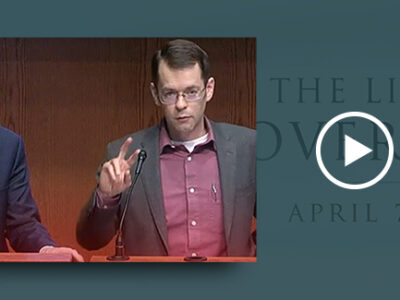Guest Commentary
Mark it down. At 2:15 p.m. on Tuesday, August 10, 2010, the U.S. Federal Reserve made a historic announcement. It signaled that the central bank was going to “preserve the size of its balance sheet.” The announcement didn’t sound all that dramatic, but don’t be fooled. In the two subsequent days, the stock market fell over 300 points, and the price of gold rose $20.
The Fed’s balance sheet, which historically consisted of nearly 100 percent U.S. Treasury securities, has grown in size from about $850 billion to a towering $2.3 trillion (or $2,300 billion) currently. In the middle of the financial crisis two years ago, the Fed expanded its holding of securities by purchasing lower-quality, mortgage-backed debt securities primarily from our nation’s domestic banking system. The need for this balance sheet expansion was to provide massive liquidity for our entire financial system.
The cash used to purchase the debt securities was literally created out of thin air, or in other words, the Fed simply printed the money. Two years ago, the financial emergency was deemed severe enough to require this dramatic money-printing exercise by the Fed. There was never any intent to make the vast expansion of money injected into the banking system anything other than “temporary” due to the financial emergency. There was always discussion in the financial press and among Fed policy makers of an “exit strategy.” The “exit strategy” discussion implied that the inflationary (or even “hyper-inflationary”) potential of this massive expansion of the banking system’s base reserves was being monitored closely. The financial markets took comfort that the Fed was standing at the ready, to withdraw the cash, should there be any sign that the central bank’s monetization exercise was having a negative effect on investor inflation psychology. That feeling of comfort has been dealt a blow with the Fed’s announcement on August 10. There is now no “exit strategy” being considered, and the size of the central bank’s balance sheet may very well become permanent.
Historically, the U.S. Federal Reserve has been given two primary objectives: one is the preservation of the purchasing power of the U.S. Dollar, and the other is to conduct a monetary policy that supports full employment. It is not an easy task to serve two masters. Additionally, in its role as a central bank, the Fed is to remain an independent institution that resists political influences. This, too, is not an easy task. The Fed’s track record as an independent institution that has preserved the purchasing power of our currency and maintained full employment is fully open to challenge. The central bank has not always demonstrated a firm independence from political influence, and the purchasing power of the U.S. Dollar has significantly diminished over the past 40 years.
An independent central bank, free of political influence, has always been a critical corner stone supporting confidence in whatever the currency the bank is charged with managing. Confidence is the one and only real currency of a central bank. What has just transpired here with the Fed’s announcement is that, in no uncertain terms, the central bank has explicitly stated it is prepared to “preserve the size of its balance sheet.”And I would add, what it didn’t say explicitly, but did signal to the political class in Washington, is a willingness to “further expand the balance sheet dramatically if need be.” The fancy term being used to describe its intent here is called “quantitative easing” or “QE.”
The real inflationary (or hyperinflationary) risk that the financial markets will calculate very carefully going forward is that the central bank, with this announcement, has now opened itself to being fully co-opted by the political process in Washington. Consider, why make hard political decisions on taxes and spending when the central bank has, in effect, just announced that it stands at the ready to print the money to finance any deficit of any size in order to underwrite any amount of future debt accumulation?
The political class in Washington will see the Fed’s announcement as a potential gold mine. They will no doubt attempt to mine it for all it’s worth. The significantly rising risk is that the accumulation of future government debt attended to this process will result in hyperinflation rather than a garden-variety, modest inflation.
Hyperinflation occurs when there is a total collapse of confidence in a currency. A central bank that is willing to simply print money out of thin air to finance unlimited amounts of debt will eventually undermine the confidence in the currency being managed as lenders eventually seize on the realization that they will never be paid back in anything other than worthless paper.
The road to hell is indeed paved with good intentions.



